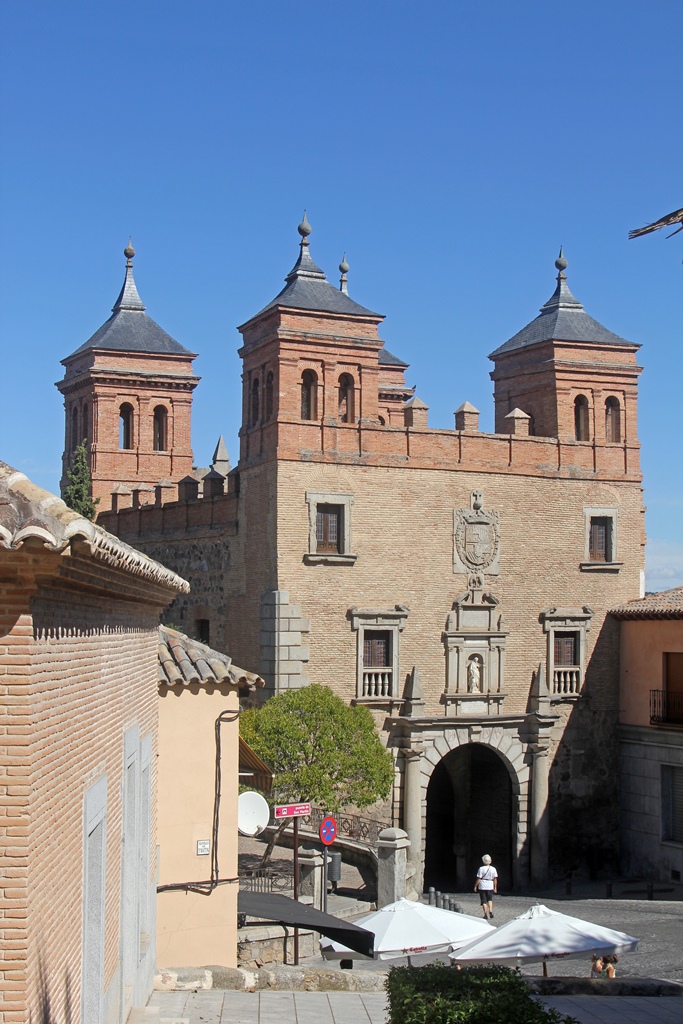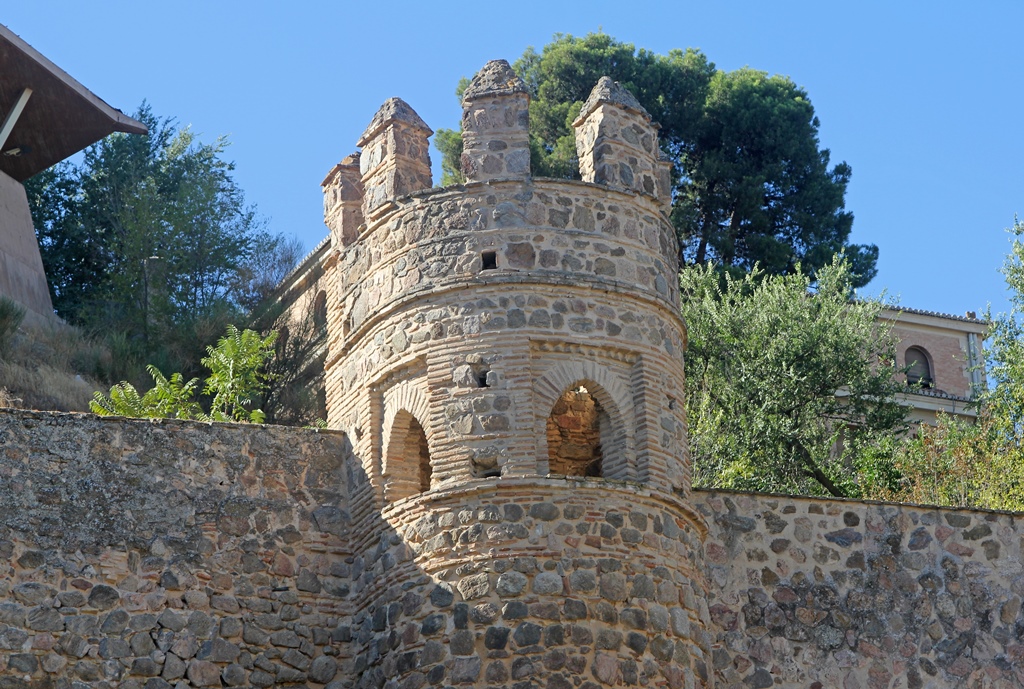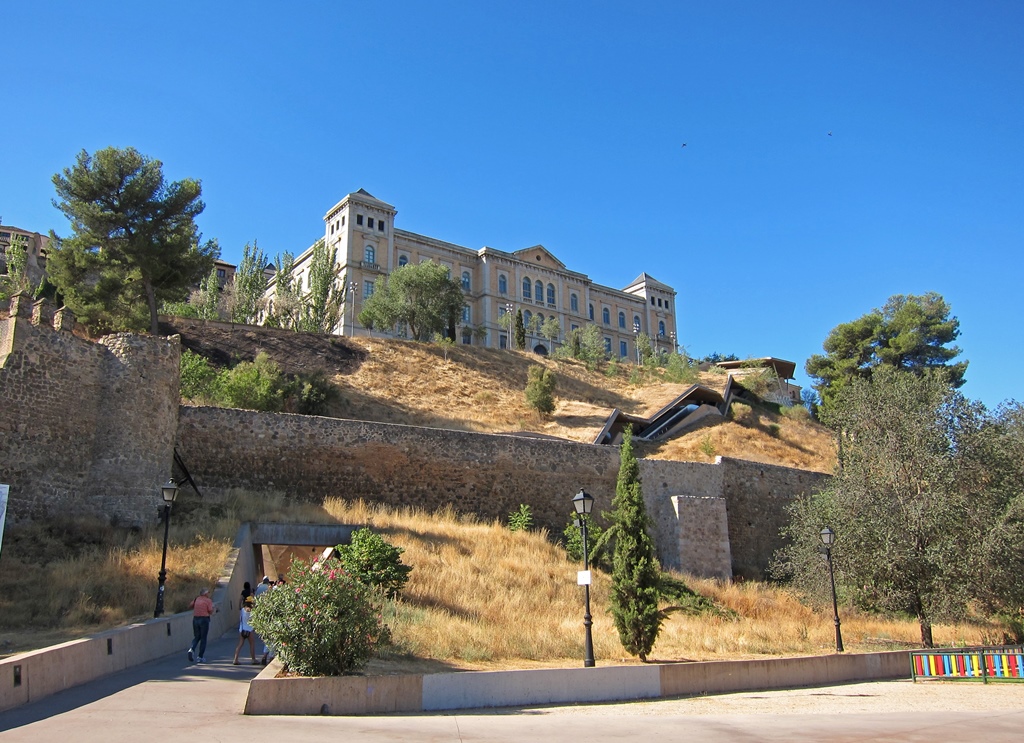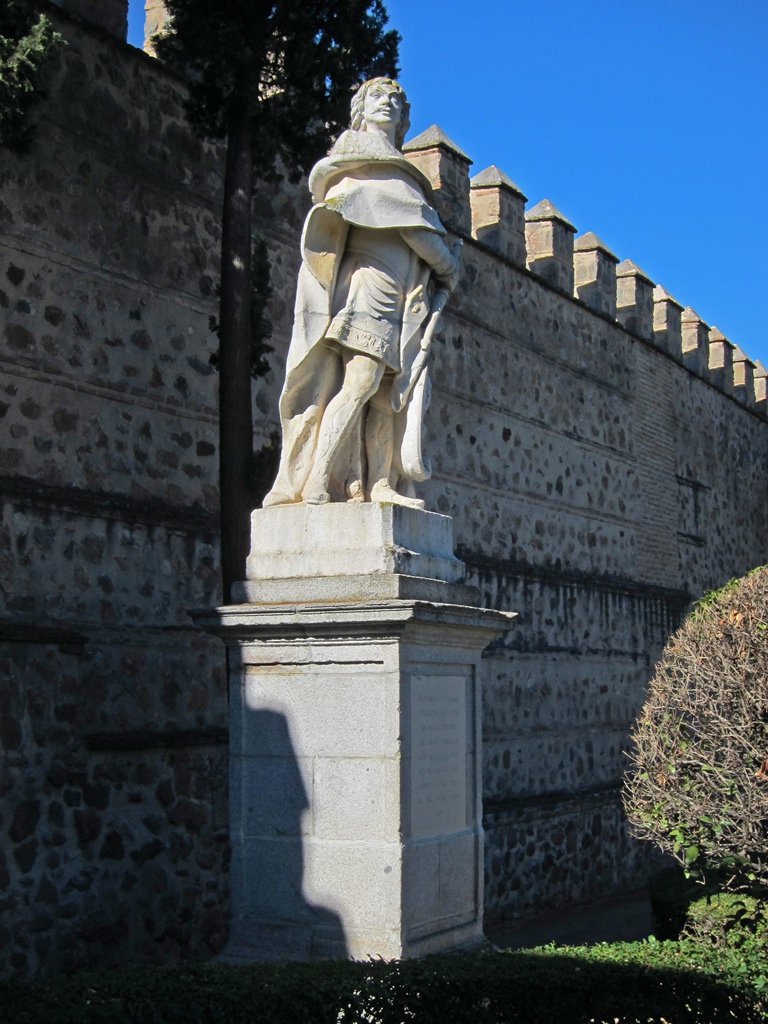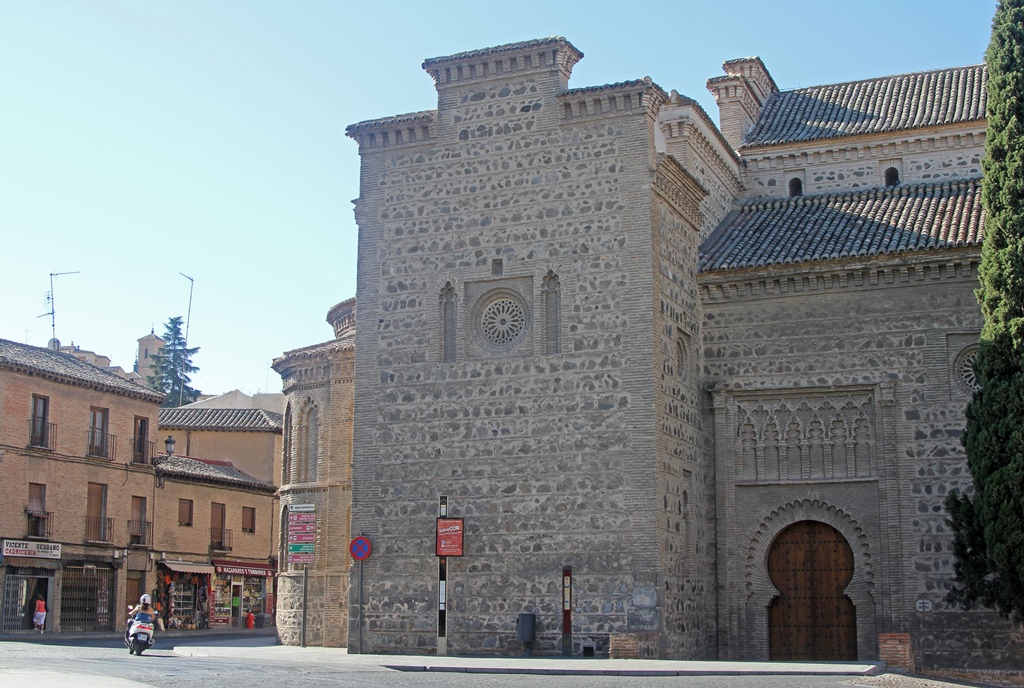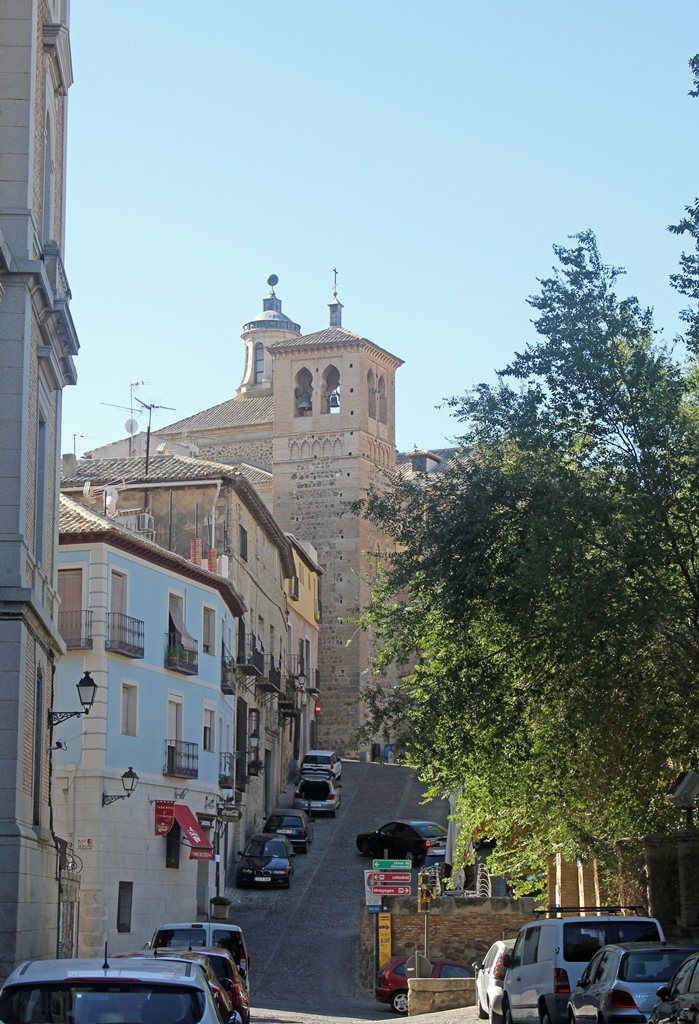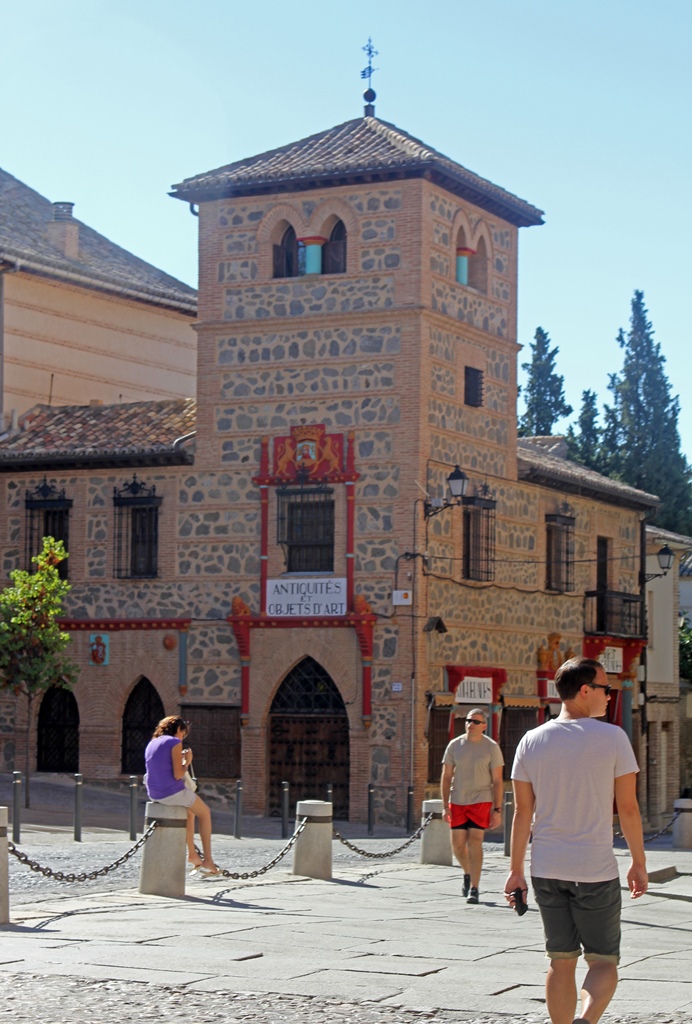This was to be our day to travel back to Madrid from Toledo. But there was no hurry, as
the trip by train was only a little more than half an hour. Also, after eating breakfast
we still had two hours to check-out time from our hotel, so we decided to use some of that
time to look around in Toledo a little more. On the previous evening we'd returned to our
hotel by bus, on the way following part of the wall along the northern boundary of the Old
Town. The wall looked interesting, so we decided to get a closer look on foot. Or to be
more specific, Philip and I decided to look at the wall, as Nella wasn't feeling well and
wasn't interested in doing much of anything. So Philip and I set out from the hotel.
The view of the wall is much better from the outside of the Old Town than from the inside,
so we somehow had to get through the wall. There are only a few places where you can get
through, each of these being one of the city gates. Fortunately one such gate was not far
from the hotel, reachable from the Calle de los Reyes Católicos on which the hotel was
situated. We walked up the street, past the synagogue and the monastery, briefly getting a
nice view of the Tagus River along the way.
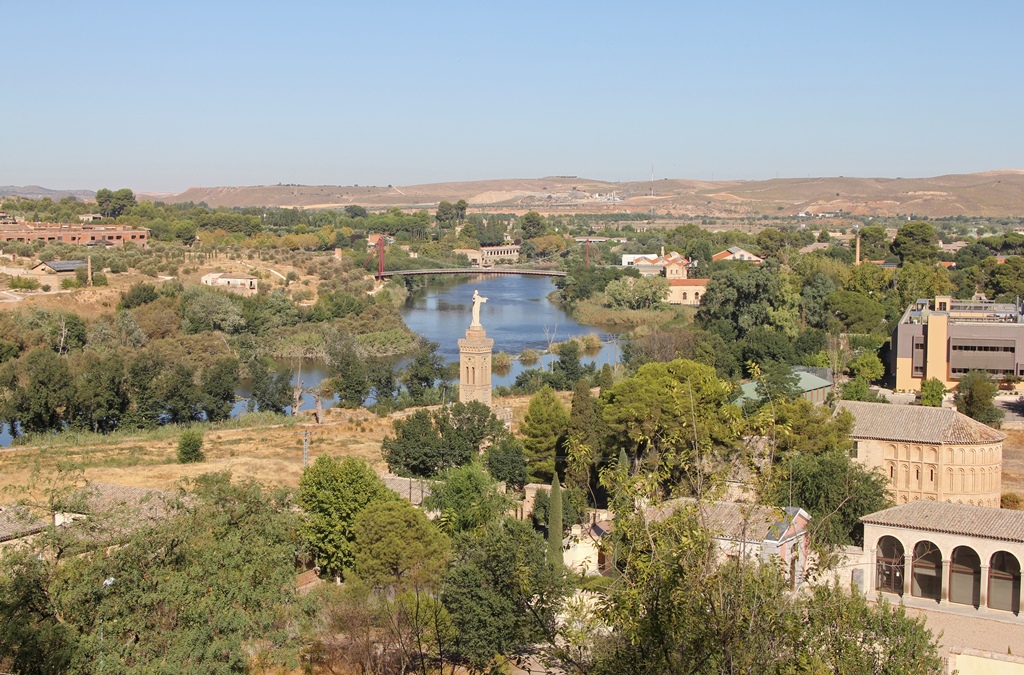
Tagus River from Jewish Quarter
Eventually we reached the gate, called the Puerta del Cambrón (a cambrón is a
twisted, spiny bush). It's not clear exactly where this name came from – maybe there were
some cambrónes in the vicinity when the gate was being named. The gate has also historically
been called the "Gate of the Jews", no doubt for its proximity to the Jewish Quarter. The
inside of the gate is decorated with a figure of St. Leocadia (martyred in Toledo in the 4th
Century) above its archway.
Puerta del Cambrón (Old Town Side)
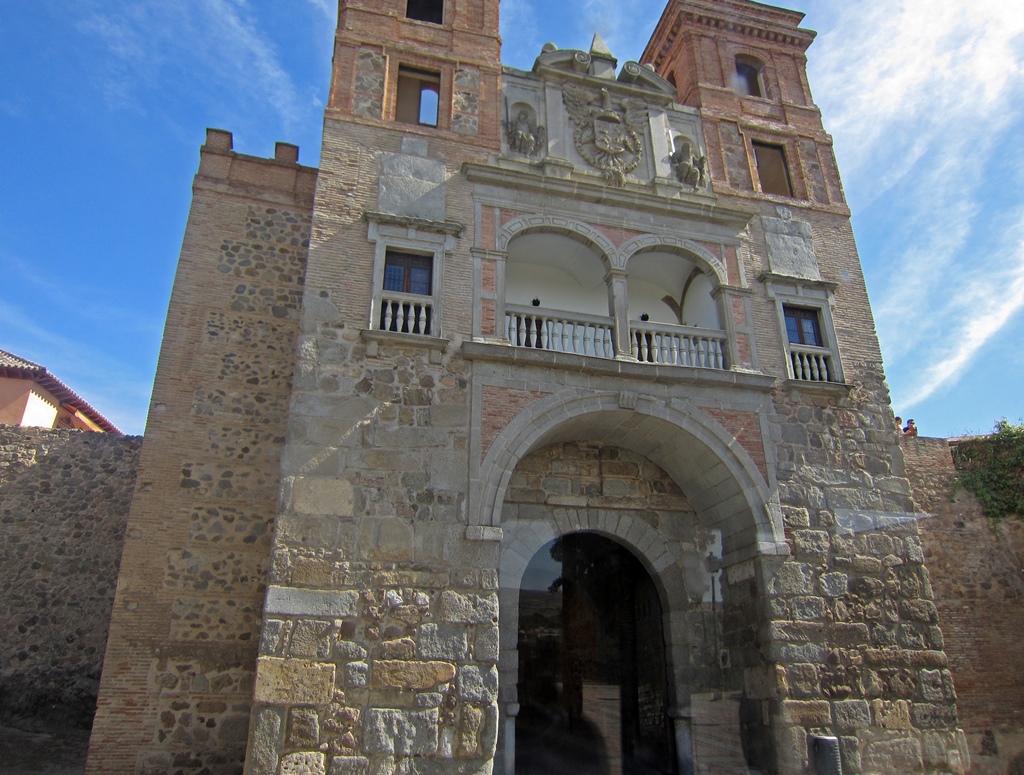
Puerta del Cambrón (Rest of World Side)
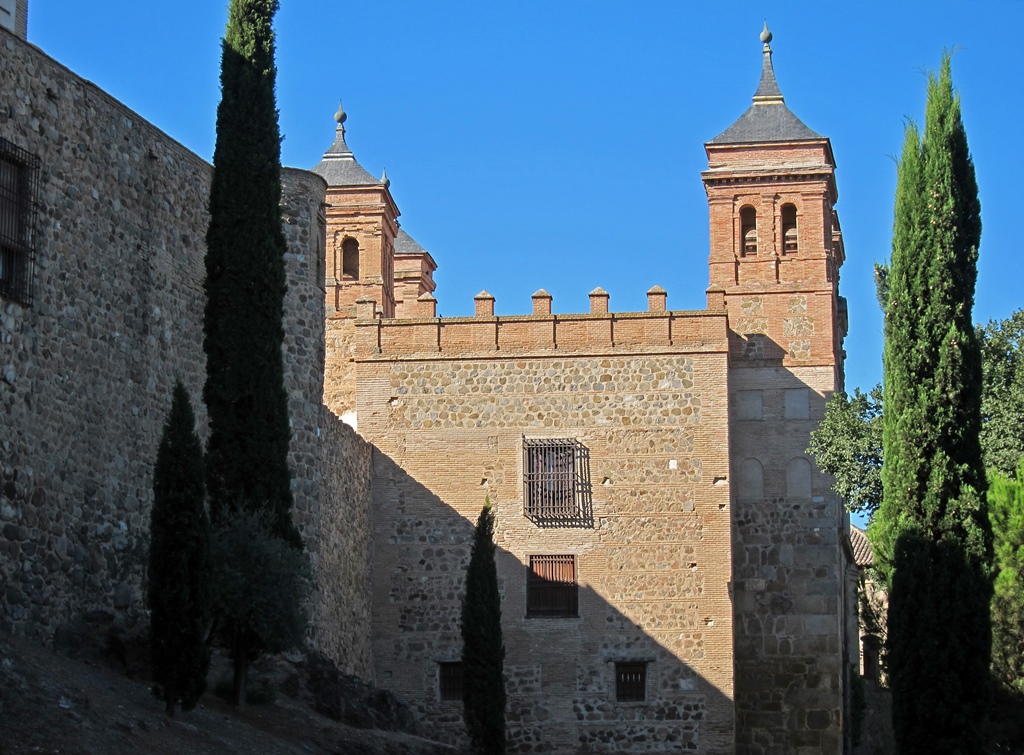
Puerta del Cambrón
The present Puerta del Cambrón was last rebuilt in 1576, a long time ago but well after
the establishment of the city wall. A wall was originally built by the Romans, but it was
expanded outward under the Visigoths and again under the Moors, each time to accommodate
the growth of the city. Its last expansion took place under Alfonso VI, who reconquered
the city for the Christians. In each expansion, it is thought that material from the
previous walls was used in the new walls.
We followed the wall eastward, noting the occasional towers embedded in it.
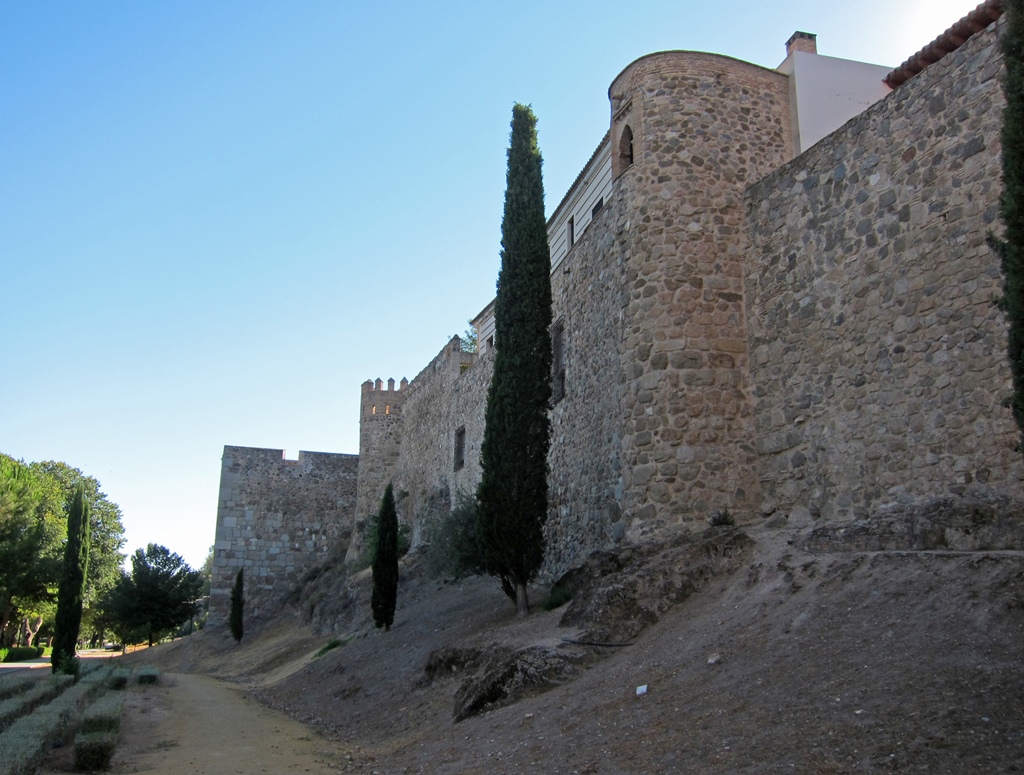
City Wall
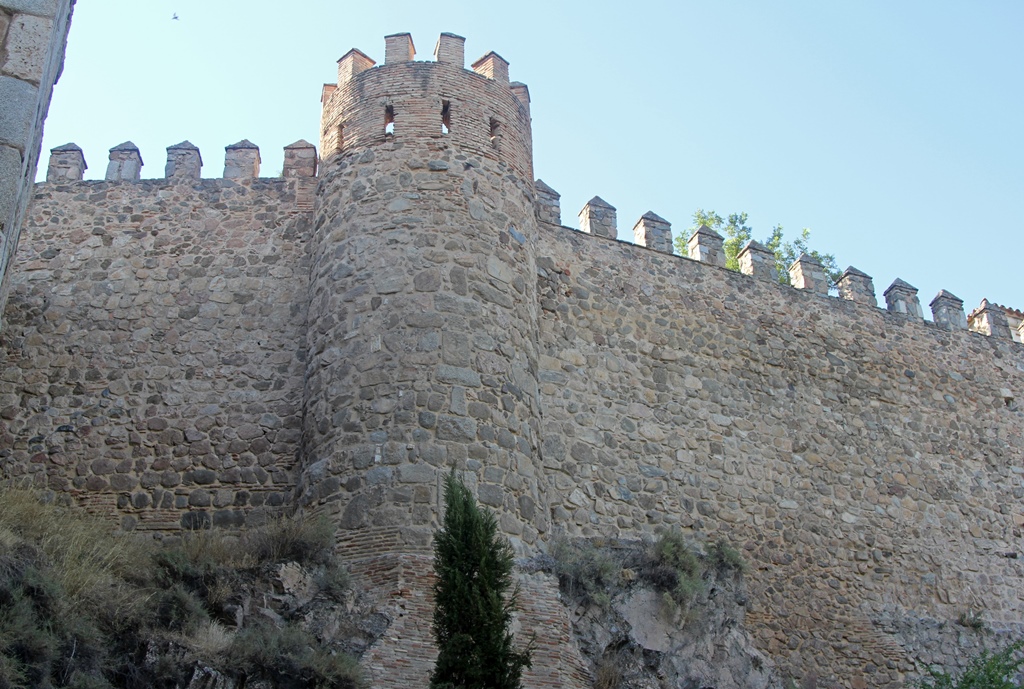
City Wall with Tower
Tower in City Wall
As we walked farther to the east, the slope on the other side of the wall became more
pronounced. At one point there was a large structure high above us, with an apparent
escalator, embedded in the hillside, leading up to it.
Wall, Escalator and Provincial Council Building
We continued along the wall and shortly came across a parking lot full of cars in front
of a simple doorway above which a sign was displayed, reading "Hacienda del Cardenal".
This is apparently a hotel and a nice place to hold events, but we didn't go in to poke
around, as we weren't sure what it was or whether we would be welcome (and our time was
limited).
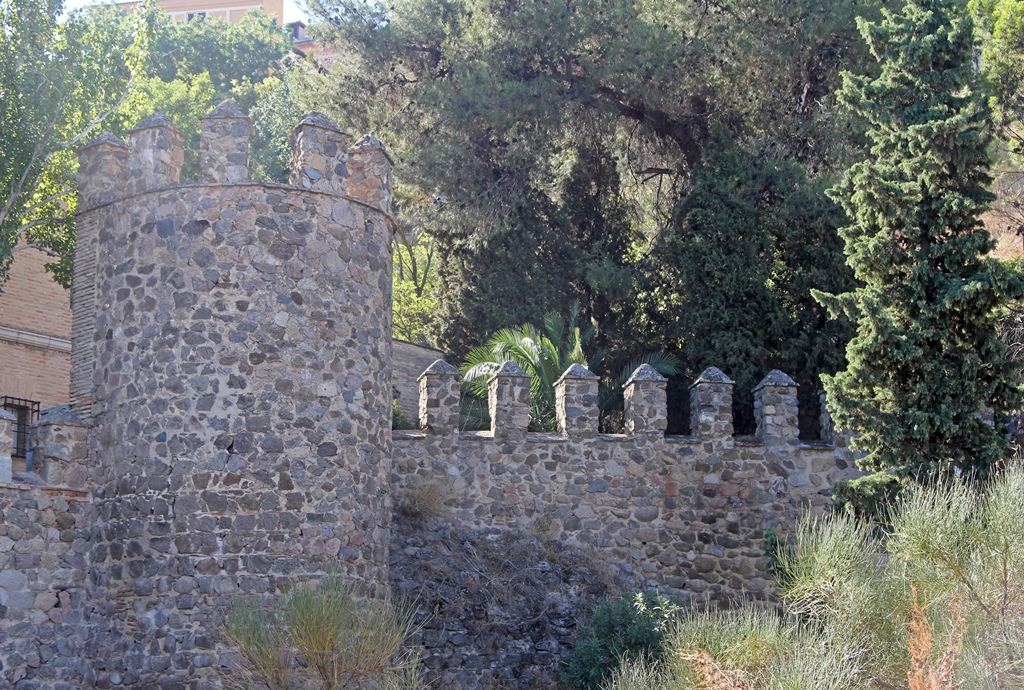
Tower and City Wall
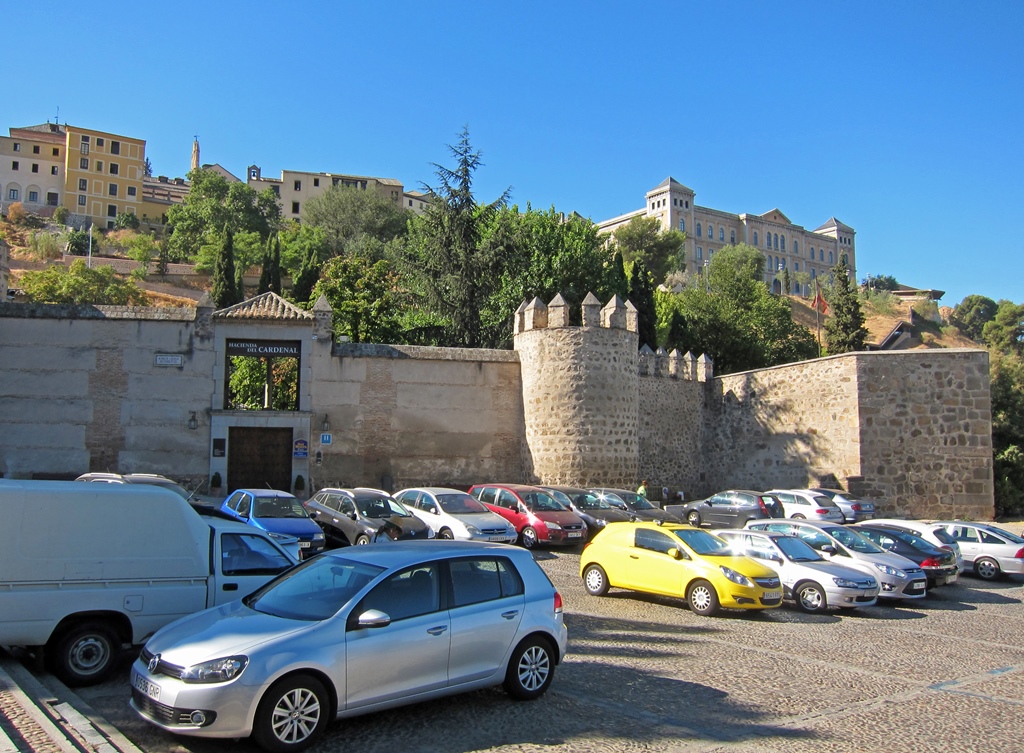
Hacienda del Cardenal with Wall
Just past the Hacienda and its parking lot we found two more historical-looking gates, both
called Puerta de Bisagra as it turned out (a bisagra is a hinge in Spanish,
but the name apparently comes from the Moorish Bab al-Saqra). You're probably
thinking that two gates with the same name could lead to confusion. The Toledans thought of
this too, and solved the problem by naming them "new" (Nueva) and "old" (Antigua). The
first one we came across was Puerta de Bisagra Antigua. When they called this the
old one, they weren't kidding – it was built by the Moors in the 10th Century, and
functioned as the main gate into the city.
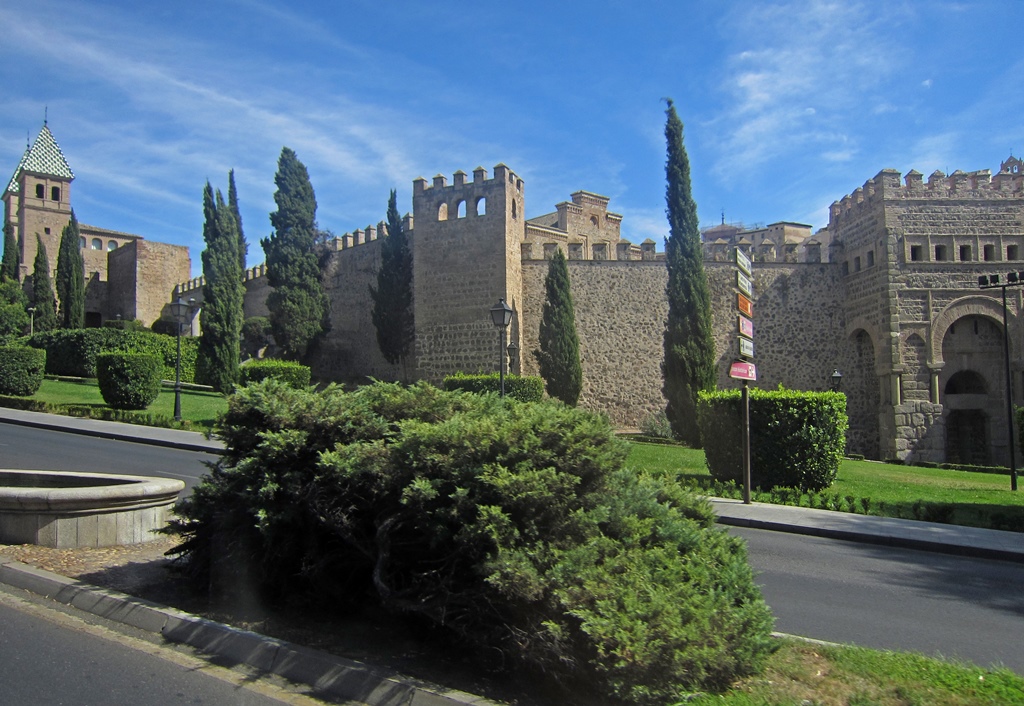
Puertas de Bisagra - Nueva and Antigua
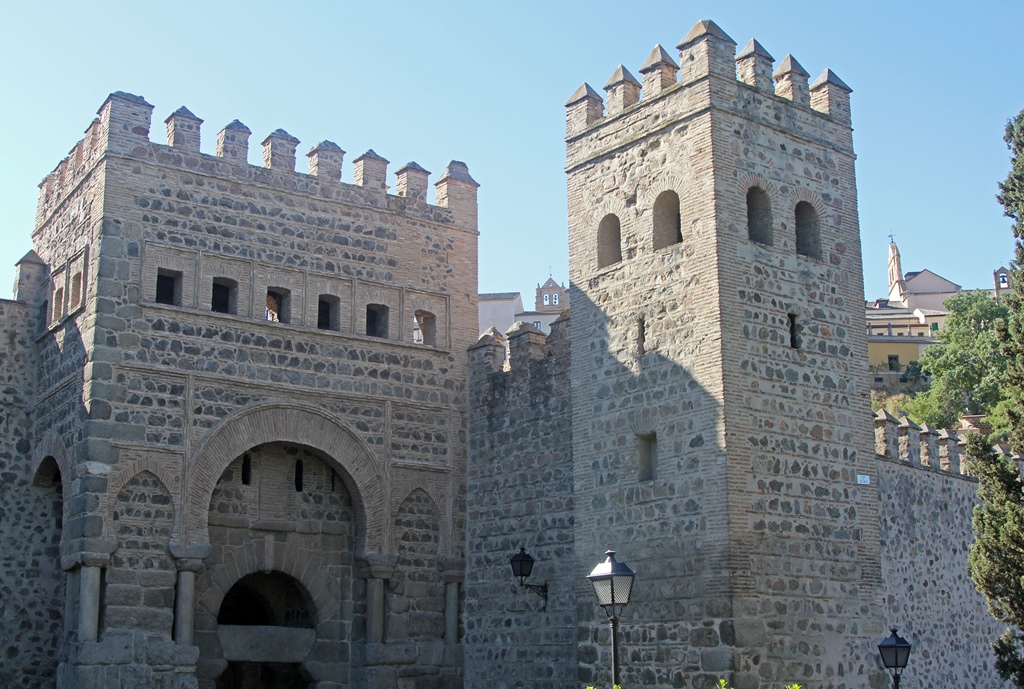
Puerta de Bisagra Antigua
We continued toward the Nueva gate, on the way passing a statue of Alfonso VI.
Statue of Alfonso VI
We didn't quite reach the second Puerta de Bisagra, as there was an entrance to the
city just before it. We peeked in and noticed an interesting-looking church.
Church of Santiago del Arrabal
The church and this part of the city looked like a can of worms we didn't have time for,
so we turned around and went back the way we came. Also, we had our priorities – we really
wanted to ride that escalator.

Heading Back to Escalator

View from the Escalator
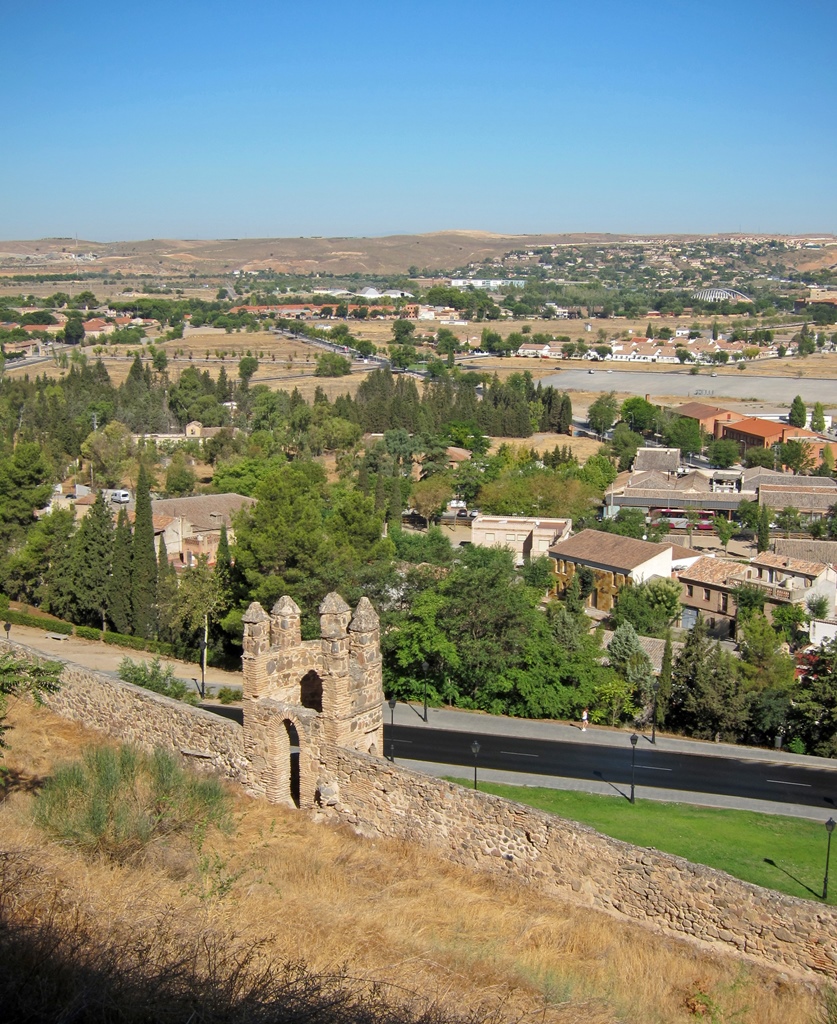
Wall, Tower and View North from Escalator
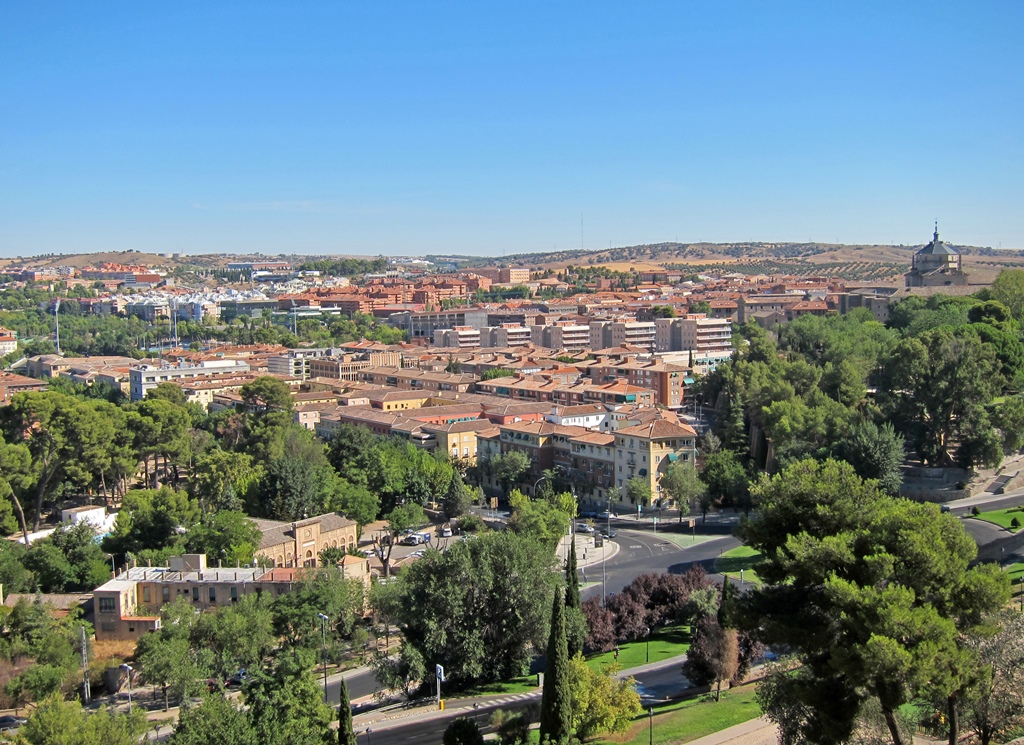
View North from Escalator
The large building at the top of the escalator was the Provincial Council Building.
From next to it we could see a church up the hill that turned out to be the Church of
Santa Leocadia, dedicated to the saint whose figure we'd seen back on the Puerta del
Cambrón. The church is supposed to have been built on her birthplace.
Church of Santa Leocadia
We headed back in the general direction of the hotel. Eventually we found a Hebrew
tile in the pavement, indicating that we were entering the Jewish Quarter, and that
we were getting close to the hotel.
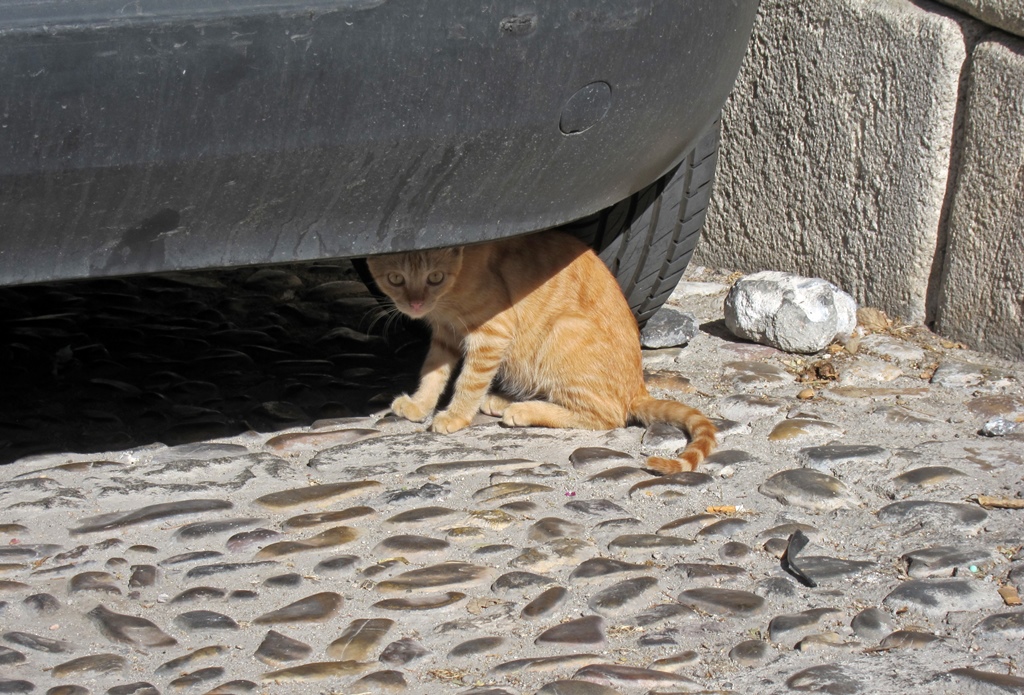
Local Beast Under Car
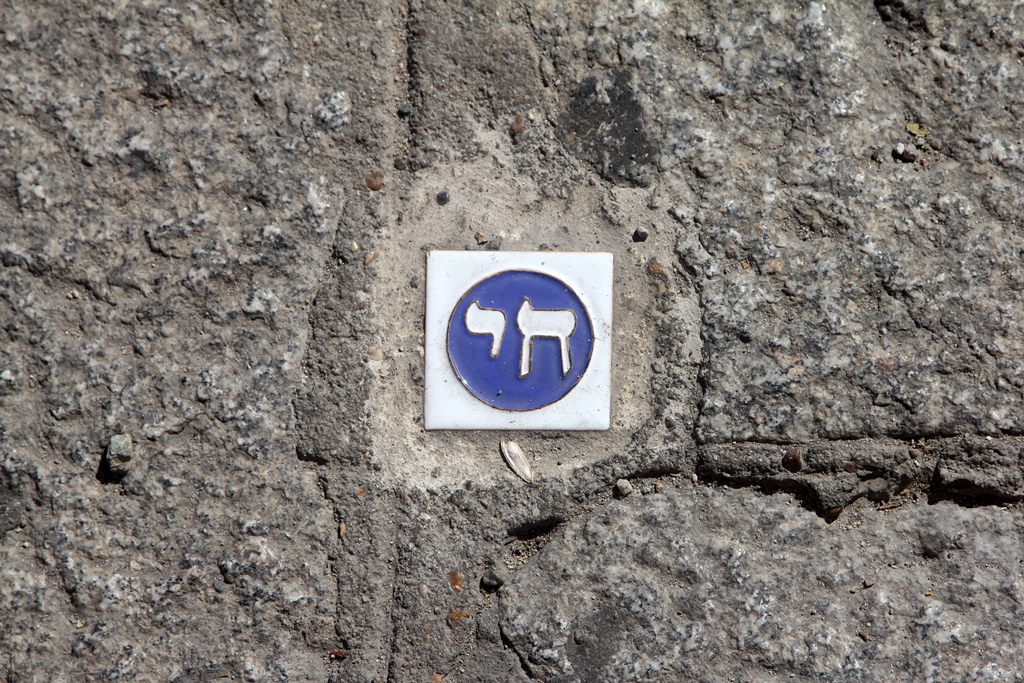
Hebrew Tile
Back to Calle de los Reyes Católicos
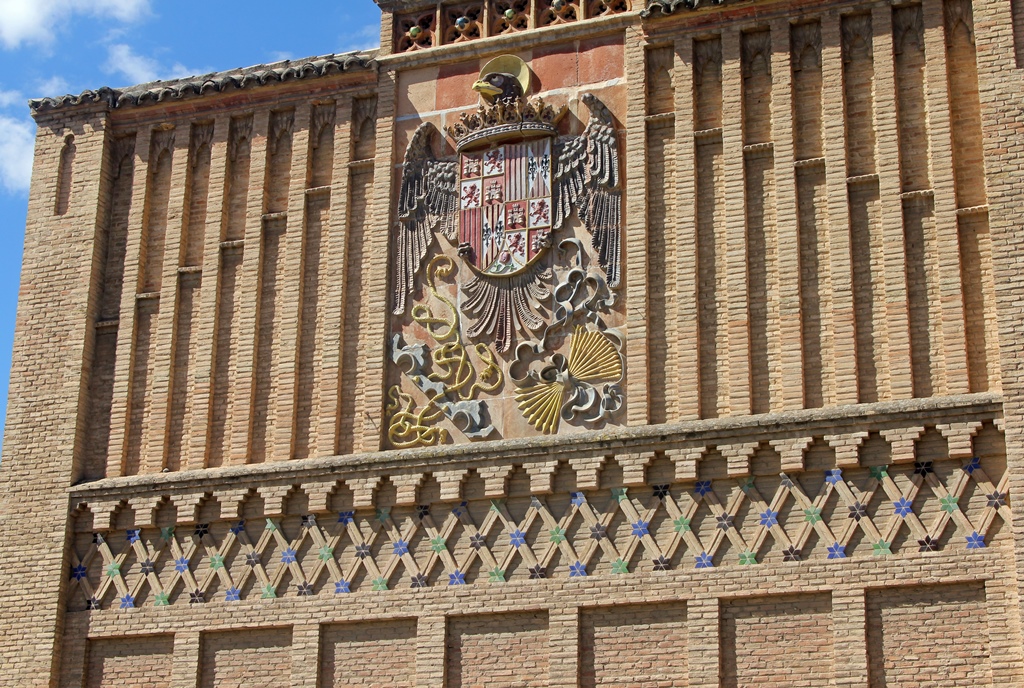
Shield of Catholic Monarchs, School of Arts and Crafts
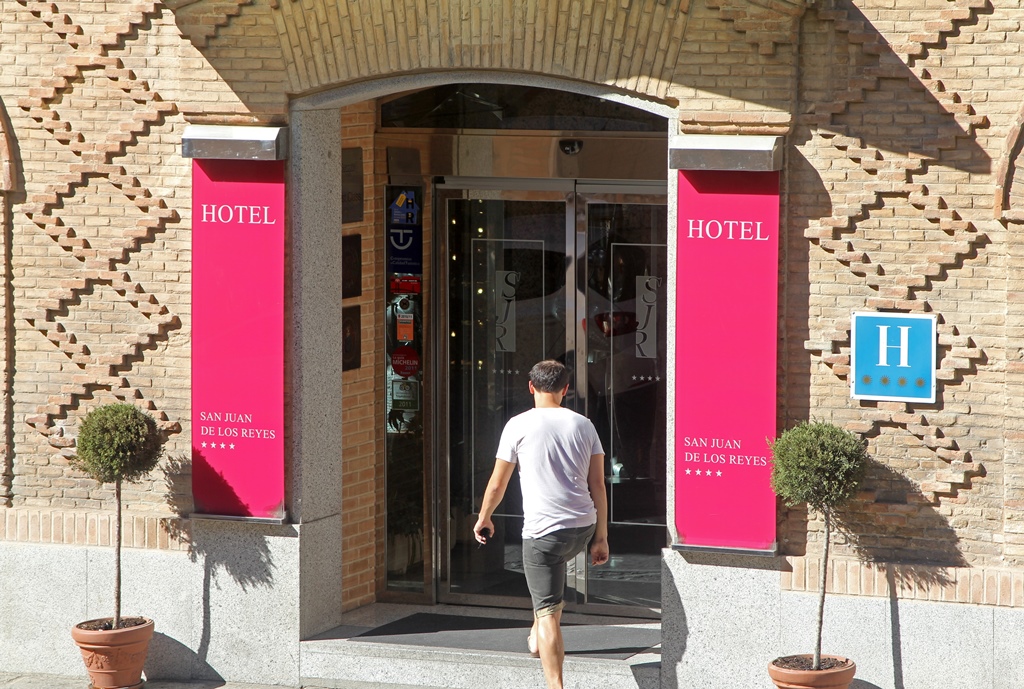
Philip Entering Hotel
On returning to the hotel, we found that Nella wasn't feeling much better, but that she
was game for moving on to Madrid as planned. We packed up a few loose objects we hadn't
already packed and made ready to leave.


